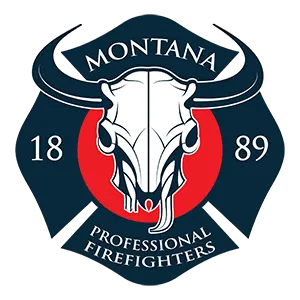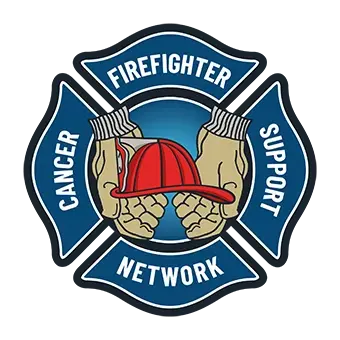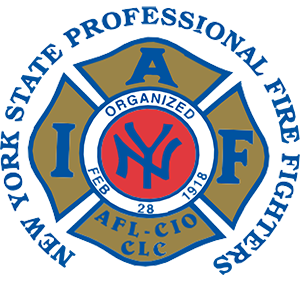NFPA 1582 Disqualifying Medical Conditions
Candidates undergoing training or emergency response duties must undergo comprehensive medical assessments, including a review of medical history, physical exams, and relevant lab tests to identify potential safety hindrances during critical tasks. If a candidate experiences a temporary impairment impacting task safety, their pre-placement medical evaluation will be postponed until recovery.
Understanding NFPA 1582 Medical Disqualifications
Before participating in training programs or emergency response activities, candidates must undergo medical evaluations. A medical evaluation involves assessing a candidate’s medical history, conducting physical examinations, and performing relevant laboratory tests to identify any physical or medical conditions that could impede their ability to safely perform essential job tasks during emergencies.
If a candidate has a temporary condition that affects their ability to perform job tasks safely, the medical evaluation can be postponed until the candidate has recovered.
Medical Conditions Affecting Ability to Safely Perform Essential Job Tasks
Medical conditions that may impact a candidate’s ability to safely perform essential job tasks are categorized as Category A or Category B.
- Candidates with Category A medical conditions cannot be certified as meeting the medical requirements of the standard.
- Candidates with Category B medical conditions can be certified as meeting the medical requirements only if they can perform essential job tasks without posing significant safety and health risks.
Head
Category A medical conditions include:
- Defect of skull preventing helmet use or leaving underlying brain unprotected from trauma
- Any skull or facial deformity that would not allow for a successful respiratory facepiece fit test
- Any head condition that results in a person not being able to safely perform essential job tasks
Category B medical conditions include:
- Defect of skull preventing helmet use or leaving underlying brain unprotected from trauma
- Any skull or facial deformity that would not allow for a successful respiratory facepiece fit test
- Any head condition that results in a person not being able to safely perform essential job tasks
Neck
Category A medical conditions include:
- Neck conditions hindering safe performance of job tasks.
Category B medical conditions include:
- Thoracic outlet syndrome.
- Congenital cysts, chronic draining fistulas, or similar lesions.
- Neck muscle contractions.
Eyes and Vision
Category A medical conditions include:
- Far visual acuity. Far visual acuity less than 20/40 binocular, corrected with contact lenses or spectacles. Far visual acuity less than 20/100 binocular for wearers of hard contacts or spectacles, uncorrected.
- Color perception. Monochromatic vision resulting in inability to use imaging devices.
- Monocular vision.
- Any eye condition that results in a person not being able to safely perform essential job tasks.
Category B medical conditions include:
- Diseases of the eye such as retinal detachment, progressive retinopathy, or optic neuritis
- Ophthalmological procedures such as radial keratotomy, Lasik procedure, or repair of retinal detachment
- Peripheral vision in the horizontal meridian of less than 110 degrees in the better eye or any condition that significantly affects peripheral vision in both eyes
Ears and Hearing
Category A medical conditions include:
- Chronic vertigo or impaired balance as demonstrated by the inability to tandem gait walk.
- On audiometric testing, average hearing loss in the unaided better ear greater than 40 decibels (dB) at 500 Hz, 1000 Hz, and 2000 Hz when the audiometric device is calibrated to ANSI Z24.5.
- Any ear condition (or hearing impairment) that results in a person not being able to safely perform essential job tasks.
Category B medical conditions include:
- Unequal hearing loss
- Average uncorrected hearing deficit at the test frequencies 500 Hz, 1000 Hz,
2000 Hz, and 3000 Hz greater than 40 dB in either ear - Atresia, stenosis, or tumor of the auditory canal
- External otitis
- Agenesis or traumatic deformity of the auricle
- Mastoiditis or surgical deformity of the mastoid
- Ménière’s syndrome, labyrinthitis, or tinnitus
- Otitis media
Dental
Category A medical conditions include:
- Dental conditions affecting safe job task performance.
Category B medical conditions include:
- Diseases of the jaws or associated tissues
- Orthodontic appliances
- Oral tissues, extensive loss
- Relationship between the mandible and maxilla that interferes with satisfactory postorthodontic replacement or ability to use protective equipment
Nose, Oropharynx, Trachea, Esophagus, and Larynx
Category A medical conditions include:
- Tracheostomy
- Aphonia
- Any nasal, oropharyngeal, tracheal, esophageal, or laryngeal condition that results in not being able to safely perform essential job tasks
Category B medical conditions include:
- Congenital or acquired deformity
- Allergic rhinitis
- Epistaxis, recurrent
- Sinusitis, recurrent
- Dysphonia
- Anosmia
- Tracheal stenosis
- Naso-pharyngeal polyposis
Lungs and Chest Wall
Category A medical conditions include:
- Active hemoptysis.
- Empyema.
- Pulmonary hypertension.
- Active tuberculosis.
- Obstructive lung diseases (e.g., emphysema, chronic bronchitis, asthma, etc.) with an FEV1/FVC <0.75, with both FEV1 and FVC below normal (<0.80%) as defined by the American Thoracic Society
- Hypoxemia—Oxygen saturation <90% at rest or exercise desaturation to <90% (exercise testing indicated when resting oxygen is <94% but >90%). Evaluate VO2max as described by American College of Sports Medicine (ACSM).
- Asthma — Reactive airways disease requiring bronchodilator or corticosteroid therapy in the previous 2 years. A candidate who has required these medications but who does not believe he/she has asthma shall demonstrate a normal response to cold air or methacholine (PC20 greater than 16 mg/ml). To be safely administered, this test shall be performed by a qualified specialist and to be valid the candidate shall be off all anti-inflammatory medications for at least 4 weeks and off bronchodilators the day of testing. A negative challenge test [as described by American Thoraic Society (ATS)], along with no recent episode of bronchospasm off medication shall be considered evidence that the candidate does not have clinically significant airways hyperactivity or asthma.
- Any pulmonary condition that results in a person not being able to safely perform essential job tasks.
Category B medical conditions include:
- Pulmonary resectional surgery, chest wall surgery, and pneumothorax
- Pleural effusion
- Fibrothorax, chest wall deformity, and diaphragm abnormalities
- Interstitial lung diseases
- Pulmonary vascular diseases or history of pulmonary embolism
- Bronchiectasis
- Infectious diseases of the lung or pleural space
- Cystic fibrosis
- Central or obstructive apnea
- Any other pulmonary condition that results in a person not being able to safely perform as a member
Heart
Category A medical conditions include:
- Coronary artery disease, including history of myocardial infarction, angina pectoris, coronary artery bypass surgery, coronary angioplasty, and similar procedures
- Cardiomyopathy or congestive heart failure, including signs or symptoms of compromised left or right ventricular function, including dyspnea, S3 gallop, peripheral edema, enlarged ventricle, abnormal ejection fraction, and/or inability to increase cardiac output with exercise
- Acute pericarditis, endocarditis, or myocarditis
- Syncope, recurrent
- A medical condition requiring an automatic implantable cardiac defibrillator or history of ventricular tachycardia or ventricular fibrillation due to ischemic or valvular heart disease, or cardiomyopathy
- Third-degree atrioventricular block
- Cardiac pacemaker
- Idiopathic hypertrophic subaortic stenosis
- Any cardiac condition that results in a person not being able to safely perform essential job tasks
Category B medical conditions include:
- Valvular lesions of the heart, including prosthetic valves
- Recurrent supraventricular or atrial tachycardia, flutter, or fibrillation
- Left bundle branch block
- Second-degree atrioventricular block in the absence of structural heart disease
- Sinus pause >3 seconds
- Ventricular arrhythmia (history or presence of multifocal PVCs or nonsustained ventricular tachycardia on resting EKG with or without symptoms; history or presence of sustained ventricular tachycardia with or without symptoms)
- Cardiac hypertrophy or hypertrophic cardiomyopathy
- History of a congenital abnormality
- Chronic pericarditis, endocarditis, or myocarditis
Vascular System
Category A medical conditions include:
- Hypertension with evidence of end organ damage or not controlled by approved medications
- Thoracic or abdominal aortic aneurysm
- Carotid artery stenosis or obstruction resulting in ε50 percent reduction in blood flow
- Peripheral vascular disease resulting in symptomatic claudication
- Any other vascular condition that results in a person not being able to safely perform essential job tasks
Category B medical conditions include:
- Vasospastic phenomena such as Raynaud’s phenomenon
- Thrombophlebitis and varicosities
- Chronic lymphedema due to lymphadenopathy or venous valvular incompetency
- Congenital or acquired lesions of the aorta or major vessels
- Circulatory instability as indicated by orthostatic hypotension, persistent tachycardia, and peripheral vasomotor disturbances
- History of surgical repair of aneurysm of the heart or major vessel
Abdominal Organs and Gastrointestinal System
Category A medical conditions include:
- Presence of uncorrected inguinal/femoral hernia regardless of symptoms
- Any gastrointestinal condition that results in a person not being able to safely perform essential job tasks
Category B medical conditions include:
- Cholecystitis
- Gastritis
- GI bleeding
- Acute hepatitis
- Hernia including the following:
- Uncorrected umbilical, ventral, or incisional hernia if significant risk exists for infection or strangulation
- Significant symptomatic hiatal hernia if associated with asthma, recurrent pneumonia, chronic pain, or chronic ulcers
- Surgically corrected hernia >3 months after surgical correction
- Inflammatory bowel disease or irritable bowel syndrome
- Intestinal obstruction
- Pancreatitis
- Diverticulitis
- History of gastrointestinal surgery
- Peptic or duodenal ulcer or Zollinger-Ellison syndrome
- Asplenia
- Cirrhosis, hepatic or biliary
- Chronic active hepatitis
Reproductive System
Category A medical conditions include:
- Any genital condition that results in a person not being able to safely perform essential job tasks
Category B medical conditions include:
- Pregnancy, for its duration
- Dysmenorrhea
- Endometriosis, ovarian cysts, or other gynecologic conditions
- Testicular or epididymal mass
Urinary System
Category A medical conditions include:
- Renal failure or insufficiency requiring continuous ambulatory peritoneal dialysis (CAPD) or hemodialysis
- Any urinary condition that results in a person not being able to safely perform essential job tasks
Category B medical conditions include:
- Diseases of the kidney
- Diseases of the ureter, bladder, or prostate
Spine and Axial Skeleton
Category A medical conditions include:
- Scoliosis of thoracic or lumbar spine with angle ε40 degrees
- History of multiple spinal surgeries or spinal surgery involving fusion of more than 2 vertebrae, diskectomy or laminectomy, or rods that are still in place
- Any spinal or skeletal condition producing sensory or motor deficit(s) or pain due to radiculopathy or nerve root compression
- Any spinal or skeletal condition causing pain that frequently or recurrently requires narcotic analgesic medication
- Cervical vertebral fractures with multiple vertebral body compression greater than 25 percent; evidence of posterior element involvement, nerve root damage, disc involvement, dislocation (partial, moderate, severe), abnormal exam, ligament instability, symptomatic, and/or less than 6 months post injury or 1 year since surgery
- Thoracic vertebral fractures with vertebral body compression greater than 50 percent; evidence of posterior element involvement, nerve root damage, disc involvement, dislocation (severe — with or without surgery), abnormal exam, ligament instability, symptomatic, and/or less than 6 months post injury or 1 year since surgery
- Lumbosacral vertebral fractures with vertebral body compression greater than 50 percent; evidence of posterior element involvement, nerve root damage, disc involvement, dislocation (partial, moderate, severe), fragmentation abnormal exam, ligament instability, symptomatic, and/or less than 6 months post injury or 1 year since surgery
- Any spinal or skeletal condition that results in a person not being able to safely perform essential job tasks
Category B medical conditions include:
- Congenital or developmental malformations of the back, particularly those that can cause instability, neurological deficits, pain, or limit flexibility
- Scoliosis with angle <40 degrees
- Arthritis of the cervical, thoracic, or lumbosacral spine
- Facet atrophism, high lumbosacral angle, hyperlordosis, Schmorl’s nodes, Scheuermann’s disease, spina bifida occulta, spondylolisthesis, spondylolysis, or transitional vertebrae
- History of infections or infarcts in the spinal cord, epidural space, vertebrae, or axial skeletal joints
Extremities
Category A medical conditions include:
- Bone hardware such as metal plates or rods supporting bone during healing
- History of total joint replacement
- Amputation or congenital absence of upper extremity limb (hand or higher)
- Amputation of either thumb proximal to the midproximal phalanx
- Amputation or congenital absence of lower extremity limb (foot or above)
- Chronic nonhealing or recent bone grafts
- History of more than one dislocation of shoulder without surgical repair or with history of recurrent shoulder disorders within the last 5 years with pain or loss of motion, and with or without radiographic deviations from normal
- Any extremity condition that results in a person not being able to safely perform essential job tasks
Category B medical conditions include:
- History of shoulder dislocation with surgical repair
- Significant limitation of function of shoulder, elbow, wrist, hand, or finger, due to weakness, reduced range of motion, atrophy, unequal length, absence, or partial amputation
- Significant lack of full function of hip, knee, ankle, foot, or toes due to weakness, reduced range of motion, atrophy, unequal length, absence, or partial amputation
- History of meniscectomy or ligamentous repair of knee
- History of intra-articular, malunited, or nonunion of upper or lower extremity fracture
- History of osteomyelitis, septic, or rheumatoid arthritis
Neurological Disorders
Category A medical conditions include:
- Ataxias of heredo-degenerative type.
- Cerebral arteriosclerosis as evidenced by a history of transient ischemic attack, reversible ischemic neurological deficit, or ischemic stroke.
- Hemiparalysis or paralysis of a limb.
- Multiple sclerosis with activity or evidence of progression within previous 3 years.
- Myasthenia gravis with activity or evidence of progression within previous 3 years.
- Progressive muscular dystrophy or atrophy.
- Uncorrected cerebral aneurysm.
- All epileptic conditions to include simple partial, complex partial, generalized, and psychomotor seizure disorders other than those with complete control during previous 5 years. A candidate shall also have normal neurological examination without structural abnormality on brain imaging, normal awake and asleep EEG with photic stimulation and hyperventilation, as well as a definitive statement from qualified neurological specialist. A candidate with epilepsy shall not be cleared for fire-fighting duty until he or she has completed 5 years without a seizure on a stable medical regimen or 1 year without a seizure after discontinuing all anti-epileptic drugs.
- Dementia (Alzheimer’s and other neuro-degenerative diseases) with symptomatic loss of function or cognitive impairment (e.g., δ28 on Mini-Mental Status Exam).
- Parkinson’s disease and other movement disorders resulting in uncontrolled movements, bradykinesia, or cognitive impairment (e.g., δ28 on Mini-Mental Status Exam).
- Any neurological condition that results in a person not being able to safely perform essential job tasks.
Category B medical conditions include:
- Congenital malformations
- Migraine
- Clinical disorders with paresis, dyscoordination, deformity, abnormal motor activity, abnormality of sensation, or complaint of pain
- History of subarachnoid or intraparenchymal hemorrhage
- Abnormalities from recent head injury such as severe cerebral contusion or concussion
Skin
Category A medical conditions include:
- Metastatic or locally extensive basal or squamous cell carcinoma or melanoma
- Any dermatologic condition that would not allow for a successful respiratory facepiece fit test
- Any dermatologic condition that results in the person not being able to safely perform essential job tasks
Category B medical conditions include:
- Skin conditions of a chronic or recurrent nature (eczema, cystic acne, psoriasis) that cause skin openings or inflammation or irritation of the skin surface
- Surgery or skin grafting
- Mycosis fungoides
- Cutaneous lupus erythematosus
- Raynaud’s phenomenon
- Scleroderma (skin)
- Vasculitic skin lesions
- Atopic dermatitis/eczema
- Contact or seborrheic dermatitis
- Stasis dermatitis
- Albinism Dariers Disease, Ichthyosis Marfan’s Syndrome, Neurofibromatosis, and other genetic conditions
- Folliculitis, Pseudo-folliculitis, Miliaria, Keloid folliculitis
- Hidradenitis suppurativa, Furuncles, Carbuncles, or Grade IV acne (cystic)
- Mechano-Bullous Disorders (Epidermolysis Bullosa, Hailey Pemphigus, Porphyria, Pemphigoid)
- Urticaria or Angioedema
Blood and Blood-Forming Organs
Category A medical conditions include:
- Hemorrhagic states requiring replacement therapy
- Sickle cell disease (homozygous)
- Clotting disorders
- Any hematological condition that results in a person not being able to safely perform essential job tasks
Category B medical conditions include:
- Anemia
- Leukopenia
- Polycythemia vera
- Splenomegaly
- History of thromboembolic disease
- Any other hematological condition that results in a person not being able to safely perform essential job tasks
Endocrine and Metabolic Disorders
Category A medical conditions include:
- Diabetes mellitus, which is treated with insulin
- Diabetes not treated by insulin, which is not controlled as evidenced by Hemoglobin A1C (Hb A1C) measurement
- Any endocrine or metabolic condition that results in a person not being able to safely perform essential job tasks
Category B medical conditions include:
- Diseases of the adrenal gland, pituitary gland, parathyroid gland, or thyroid gland of clinical significance
- Nutritional deficiency diseases or other metabolic disorder
- Diabetes mellitus that is well controlled on diet, exercise, and/or oral hypoglycemic agents
Systemic Diseases and Miscellaneous Conditions
Category A medical conditions include:
- Any systemic condition that results in a person not being able to safely perform essential job tasks
Category B medical conditions include:
- Connective tissue disease, such as dermatomyositis, systemic lupus erythematosus, scleroderma, and rheumatoid arthritis
- History of thermal, chemical, or electrical burn injury with residual functional deficit
- Documented evidence of a predisposition to heat stress with recurrent episodes or resulting residual injury
Tumors and Malignant Diseases
Category A medical conditions include:
- Malignant disease that is newly diagnosed, untreated, or currently being treated
- Any tumor or similar condition that results in a person not being able to safely perform essential job tasks
Category B medical conditions include:
- Benign tumors
- History of CNS tumor or malignancy
- History of head and neck malignancy
- History of lung cancer
- History of GI or GU malignancy
- History of bone or soft tissue tumors or malignancies
- History of hematological malignancy
Psychiatric Conditions
Category A medical conditions include:
- Any psychiatric condition that results in a person not being able to safely
Category B medical conditions include:
- A history of psychiatric condition or substance abuse problem
- Requirement for medications that increase an individual’s risk of heat stress, or other interference with the ability to safely perform essential job tasks
Chemicals, Drugs, and Medications
Category A medical conditions include:
- Those that require chronic or frequent treatment with any of the following medications or classes of medications:
- Narcotics, including methadone
- Sedative-hypnotics
- Drugs that prolong Prothrombin Time, Partial Thromboplastin Time, or INR
- Beta-adrenergic blocking agents
- Respiratory medications: Inhaled bronchodilators, inhaled corticosteroids, systemic corticosteroids, theophylline, and leukotriene receptor blockers/antagonists
- Any chemical, drug, or medication that results in a person not being able to safely perform essential job tasks
- Tobacco use
- Evidence of illegal drug use detected through testing, conducted in accordance with Substance Abuse and Mental Health Service Administration (SAMHSA)
- Evidence of clinical intoxication or a measured blood alcohol level that exceeds the legal definition of intoxication according to the AHJ at the time of medical evaluation
Category B medical conditions include:
- Cardiovascular agents
- Stimulants
- Psychoactive agents
- Corticosteroids
- Antihistamines
- Muscle relaxants
Frequently Asked Questions
What is the purpose of NFPA 1582?
The purpose of NFPA 1582 is to establish minimum medical requirements for firefighters to reduce the risk of injury and illness resulting from their duties.
What is included in NFPA 1582?
NFPA 1582 includes the minimum requirements for medical evaluations of firefighters, medical qualifications that firefighters must meet to perform their duties safely, and medical disqualifications that could prevent a firefighter from performing their duties safely.
Who is responsible for ensuring that fire departments comply with NFPA 1582?
It is the responsibility of the fire department to ensure that they comply with NFPA 1582. The fire department should develop and implement a comprehensive occupational medical program that meets the minimum requirements outlined in the standard.
Are volunteer firefighters required to undergo medical evaluations under NFPA 1582?
Yes, NFPA 1582 applies to all firefighters, including volunteer firefighters. Fire departments should ensure that all firefighters, whether paid or volunteer, undergo the required medical evaluations and medical surveillance.
How often are firefighters required to undergo medical evaluations under NFPA 1582?
The frequency of medical evaluations required under NFPA 1582 varies depending on the firefighter’s age and job duties. For example, firefighters under the age of 30 should undergo a medical evaluation every three years, while firefighters over the age of 40 should undergo a medical evaluation annually. Firefighters who have experienced a significant illness or injury or who have been exposed to a hazardous substance may also require additional medical evaluations.
Are fire departments required to use specific medical providers for medical evaluations under NFPA 1582?
No, fire departments are not required to use specific medical providers for medical evaluations under NFPA 1582. However, the medical provider conducting the evaluations should be knowledgeable about the physical and mental demands of firefighting and should have experience working with firefighters.
What should a firefighter do if they are diagnosed with a medical condition that may affect their ability to perform their duties safely?
If a firefighter is diagnosed with a medical condition that may affect their ability to perform their duties safely, they should inform their department’s medical director or physician immediately. The medical director or physician can then make recommendations for further evaluation or treatment as necessary.
What happens if a firefighter is deemed unfit for duty after a medical evaluation?
If a firefighter is deemed unfit for duty after a medical evaluation, the fire department may need to make accommodations or adjustments to the firefighter’s duties or shift assignments. The firefighter may also need to undergo further evaluation or treatment before being cleared to return to duty.
Can a firefighter be excluded from duty based on the results of a medical evaluation?
Yes, a firefighter can be excluded from duty based on the results of a medical evaluation if the evaluation identifies a medical condition that could impair the firefighter’s ability to perform their duties safely. The decision to exclude a firefighter from duty should be made by the medical provider conducting the evaluation in consultation with the fire department.
What are some of the medical disqualifications outlined in NFPA 1582?
Some of the medical disqualifications outlined in NFPA 1582 include cardiovascular disease, respiratory conditions, musculoskeletal conditions, neurological conditions, and mental health conditions.
What are the consequences of NFPA 1582 disqualifications?
The consequences of NFPA 1582 disqualifications will depend on the policies of the firefighter’s department and the severity of their medical condition. Firefighters may be placed on restricted duty or removed from duty entirely, and may be eligible for disability benefits or other forms of compensation.
What are the consequences of noncompliance with NFPA 1582?
Noncompliance with NFPA 1582 can result in legal and regulatory penalties, including fines, lawsuits, and loss of accreditation. Noncompliance can also put firefighters at risk of injury and illness and can damage the reputation and credibility of the fire department.
What should firefighters do to prepare for medical evaluations under NFPA 1582?
Firefighters should be proactive about their health by maintaining a healthy lifestyle, getting regular medical check-ups, and following any medical recommendations or treatments prescribed by their healthcare provider.
Who We Work With















